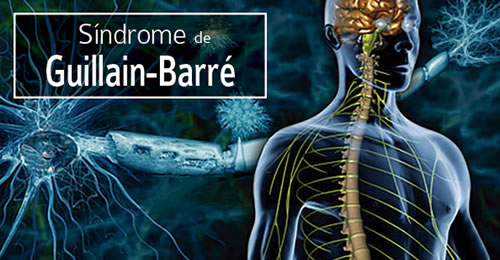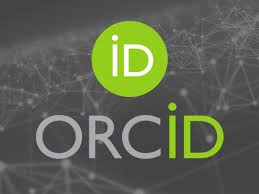Clinical behavior in serious patients with Syndrome of Guillain-Barré
Keywords:
guillain-barre syndromeAbstract
It was performed a descriptive, retrospective and transversal study to describe the clinical behavior in 26 patients with the diagnosis of Severe Acute Guillain-Barré Syndrome, they were hospitalized in the Intensive Care Unit of the Clinical Surgical University Teaching Hospital "Celia Sánchez Manduley" in Manzanillo, Granma, during the years 2007 and 2008. There were determined the affectations in the members, the osteotendinous areflexia, autonomic dysfunction, afectation of the trunk and the respiratory organs. 65,4% of the patients belonged to the male sex. The average age was about 42.8 years for men and of 37.2 for the women. The white skin (61.5%) prevailed in the sample. There was a great predominance of people from the urban zone (76,9%). 90% of the patients abandoned the hospital with total recovery of the damaged neurological functions, in a period less than four months after the beginning of the motor compromise, besides the sequels occurred in the ones of greater extension of the motor defficit. It was observed a clinical behavior in 14 patients (53,8%), clinical manifestations in the upper and inferior members. It was observed a clinical behavior of 11,5% of the total of patients evaluated and it belonged to 88,5%, when the study of the LCR was included.
Downloads
References
1.Govoni V, Granieri E. Epidemiology of the Guillain-Barre Syndrome. Neurol. 2001, 14: 605-13.
2.Van der Merché F.G.A, Van Doom P.A. Guillain-Barre and chronic inflammatory demyelinating polyneuropathy. Inmune mechanism and update on current therapies. Ann Neurol. 1999, 37 (suppl): 514-31.
3.Asbury A. New concepts of Guillain-Barre Syndrome. J Child Neurol. 2000; 15: 183-91.
4.Kaida K, Morita D, Kanzaki M, Kamakura K, Motoyoshi K, Hirakawa M. Ganglioside complexes as new target antigens in Guillain-Barre Syndrome. Ann Neurol. 2004, 56: 567-71.
5.Coll-Cantí J, Alvarez RR, Dorado L, Guerrero SM, Dávalos A, Martínez EM. Sídrome de Guillain-Barré e iVIC: ¿Influye la instauración precoz de tratamiento en la estancia media hospitalarñía? Neurol. 2009; 24(4): 217-19.
6.Hughes RA, Swan AV, Van Doorn PA. Intravenous immunoglobulin for Guillain-Barre Syndrome. Cochrane Summary [Internet] 2008 [citado 2 de abril 2008]. Disponible en: http://summaries.cochrane.org/CD002063/intravenous-immunoglobulin-for-guillain-barre-syndrome
7.Markoula S, Giannopoulos S, Sarmas I, Tzavidi S, Kyritsis AP, Lagos G. Guillain-Barre Syndrome in northwest Greece. Acta Neurol Scand. 2007, 115: 167-73.
8.Raphael JC, Chevret S, Hughes RA, Annane D. Plasma exchange for Guillain-Barre. Cochrane Database [Internet] 2002 [citado 2 de abril 2008]. Disponible en: http://www.ncbi.nlm.nih.gov/pubmed/12076424
9.Hernández AE, Bali D, Cruz M, Moreno O. Presentación clínica y evolución del Síndrome de Guillain-Barré en una Unidad de Cuidados Intensivos. Rev Cubana Med. 2002; 41(6): 35-9.
10.Carvajal RA, Castañón JA, León MA. Plasmaféresis en el Síndrome de Guillain-Barré. Gac Méd Méx [Internet] 2002 [citado 5 de noviembre de 2009]; 138(6). Disponible en: http://www.medigraphic.com/pdfs/gaceta/gm-2002/gm026d.pdf
11.Moschini J. Guia de práctica clínica. Manejo de pacientes con Síndrome de Guillain-Barré. Primera parte. Area de sistema nervioso periférico. Buenos Aires. Argentina; 2005.
12.Marchesoni C. Guia de práctica clínica. Manejo de pacientes con Síndrome de Guillain-Barré. Segunda parte. Area de sistema nervioso periférico. Buenos Aires. Argentina; 2005.
13.Gutiérrez RJ, Caballero LA. Síndrome de Guillain-Barré. En: Caballero LA. Terapia intensiva. T III. Ciudad de la Habana: Editorial Ciencias Médicas; 2008. P. 1071-85.
14.Hughes R. Campylobacter jejuni in Guillain-Barre Syndrome. Lancet Neurol. 2004, 3(11): 644.
15.Jacobs BC, Hazenberg MP, Van Door PA. Cross reactive antibodies against gangliosides and campylobacter jejuni lipoplysacharides in patients with Guillain-Barre or Miller Fisher Syndrome. J Infect Dis. 1997, 175(7): 729-35.
16.Pritchard J. What's New in Guillain-Barré Syndrome? Postgrad Med J [Internet]. 2008 [citado 5 de noviembre 2009]; 84. Disponible en: http://pmj.bmj.com/content/84/996/532.full
17.Erazo Torricelli R. Síndrome de Guillain-Barré en pediatría. Medicina. [Internet]. 2009 [citado 5 de noviembre 2009]; 69(1/1). Disponible en: http://www.medicinabuenosaires.com/revistas/vol69-09/1_1/v69_n1_1_p84_91.pdf
18.Duarte MJ, Díaz MS, Gutiérrez JR. Síndrome de Guillain-Barré. Acercamiento diagnóstico terapéutico. Rev Med Int Mex [Internet]. 2005 [citado 5 de noviembre 2009]; 21(6). Disponible en: http://new.medigraphic.com/cgi-bin/resumenMain.cgi?IDARTICULO=6931&IDPUBLICACION=804&IDREVISTA=83

Published
How to Cite
Issue
Section
License
Avisos de derechos de autor propuestos por Creative Commons
1. Política propuesta para revistas que ofrecen acceso abierto
Aquellos autores/as que tengan publicaciones con esta revista, aceptan los términos siguientes:- Los autores/as conservarán sus derechos de autor y garantizarán a la revista el derecho de primera publicación de su obra, el cuál estará simultáneamente sujeto a la Licencia de reconocimiento de Creative Commons que permite a terceros compartir la obra siempre que se indique su autor y su primera publicación esta revista.
- Los autores/as podrán adoptar otros acuerdos de licencia no exclusiva de distribución de la versión de la obra publicada (p. ej.: depositarla en un archivo telemático institucional o publicarla en un volumen monográfico) siempre que se indique la publicación inicial en esta revista.
- Se permite y recomienda a los autores/as difundir su obra a través de Internet (p. ej.: en archivos telemáticos institucionales o en su página web) antes y durante el proceso de envío, lo cual puede producir intercambios interesantes y aumentar las citas de la obra publicada. (Véase El efecto del acceso abierto).






